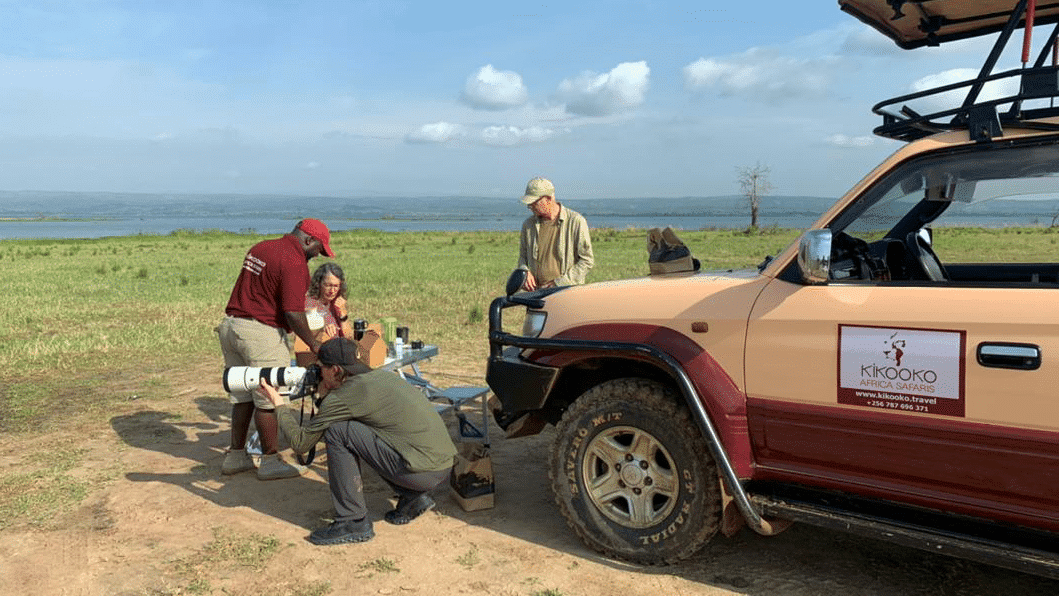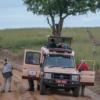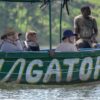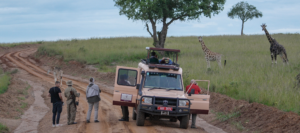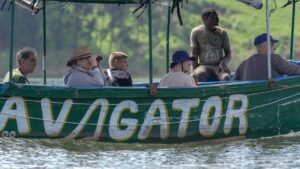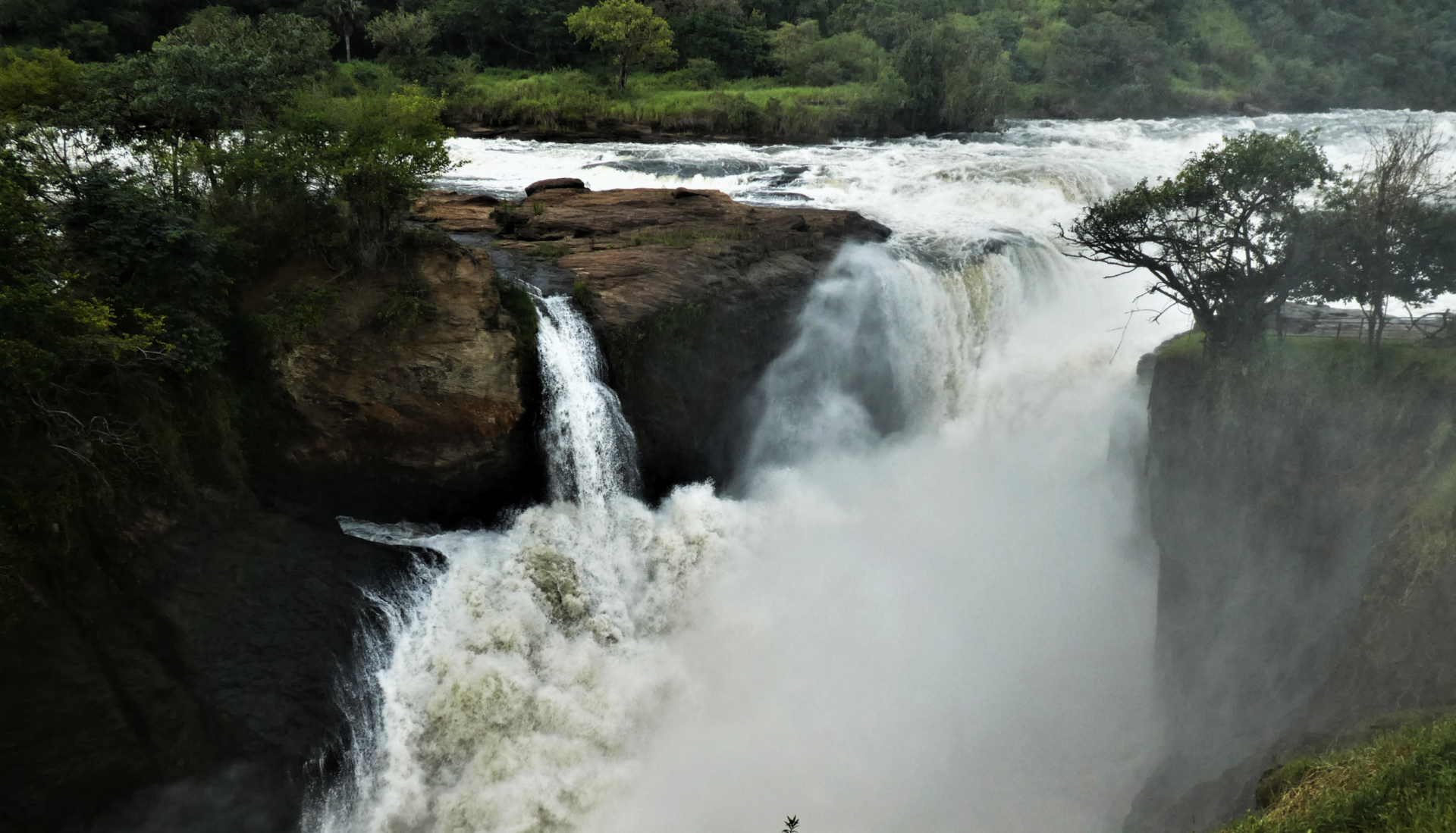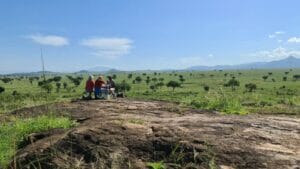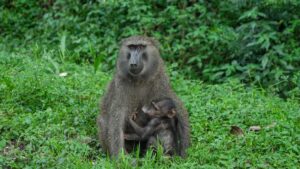Africa is a continent of unparalleled beauty, rich wildlife, and breathtaking landscapes that have captivated the hearts of adventurers, photographers, and nature lovers for centuries. For those passionate about photography, there is no better way to document and experience the wonders of Africa than through an exhilarating Africa Picture Safari.
This unique and immersive experience allows photographers to capture stunning images of Africa’s diverse wildlife, majestic landscapes, and vibrant cultures.
As Kikooko Africa Safaris, it’s been an honor to introduce guests from all over the world to our corner here in East Africa. Below we’re sharing our 10+ years of experience in East Africa – and traveling all over the continent – to give you a better idea of what to expect when embarking on Africa picture safaris.
- What are Africa Picture Safaris?
- Overview of popular African safari destinations for photography enthusiasts
- Planning for an Africa Picture Safari
- Top Wildlife Photography Opportunities in Africa
- Exploring the famous Big Five: lions, elephants, rhinos, leopards, and buffalos
- Capturing the Great Migration in the Serengeti and Masai Mara
- Photographing the unique wildlife of the Okavango Delta
- Seeking out the elusive mountain gorillas in Uganda and Rwanda
- Discovering the diverse bird species of Africa
- Other popular wildlife photography subjects in Africa
- Techniques and Tips for Successful Wildlife Photography
- Understanding the basics of wildlife photography: composition, exposure, and focus
- Mastering the art of capturing wildlife behavior and action shots
- Using natural light and understanding the importance of timing
- Tips for photographing animals in challenging environments (e.g., low light, dense vegetation)
- Ethical considerations in wildlife photography: respecting the animals and their habitat
- Enhancing Your Africa Picture Safari Experience
- Engaging with local communities and capturing cultural experiences
- Incorporating landscape and scenic photography into your safari
- Making the most of photography workshops and guided tours
- Post-processing and editing techniques for wildlife photography
- Showcasing and sharing your Africa Picture Safari: creating a memorable portfolio
- Book Your Africa Picture Safaris With Kikooko Africa Safaris
What are Africa Picture Safaris?
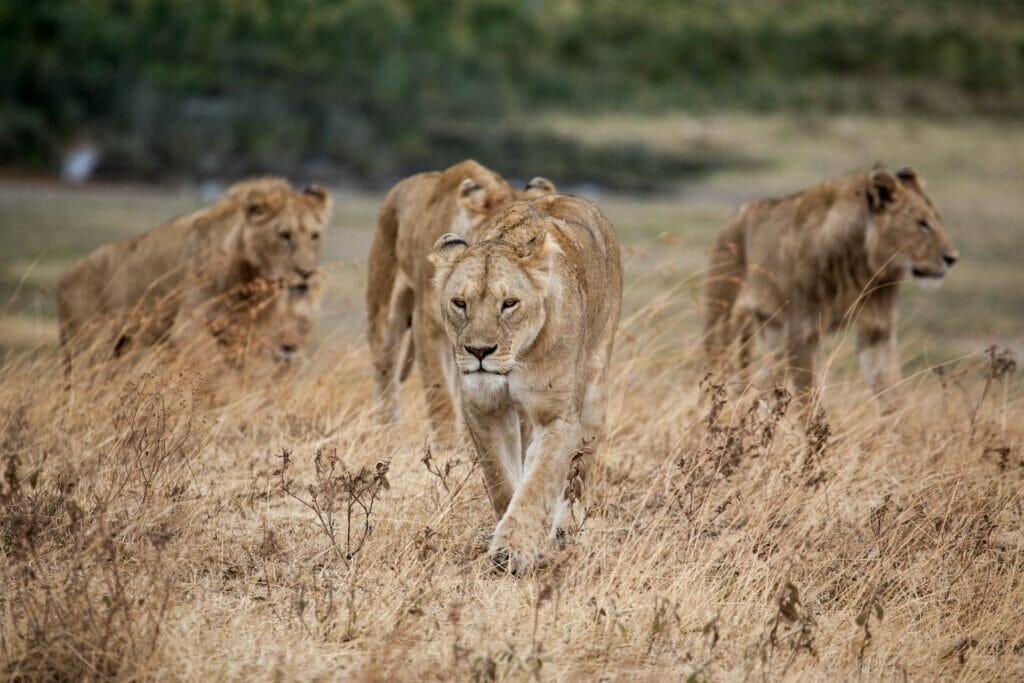
Africa Picture Safaris, also known as wildlife photography safaris, are specialized tours designed for photography enthusiasts seeking to capture the essence of Africa’s natural wonders through their lenses. These safaris offer a once-in-a-lifetime opportunity to witness and photograph Africa’s iconic wildlife, including lions, elephants, rhinos, leopards, buffalos, and much more, in their natural habitats.
Why Africa is an ideal destination for wildlife photography
Africa is widely regarded as the ultimate destination for wildlife photography, and for good reason. The continent boasts an incredible diversity of flora and fauna, with countless species of animals, birds, and insects that cannot be found anywhere else on Earth. From the vast savannahs of East Africa to the dense rainforests of Central Africa and the arid deserts of Southern Africa, Africa’s varied ecosystems provide an unparalleled backdrop for capturing awe-inspiring images.
Moreover, Africa’s conservation efforts have ensured the preservation of many endangered species, offering photographers the opportunity to witness these magnificent creatures up close. The sheer abundance of wildlife in Africa provides photographers with endless opportunities to capture captivating moments and tell compelling stories through their photographs.
The benefits of going on a picture safari in Africa
Embarking on an Africa Picture Safari offers numerous benefits beyond the thrill of photographing exotic wildlife. Firstly, these safaris are led by experienced guides who possess an intimate knowledge of the local ecosystems and animal behavior. Their expertise ensures that photographers are in the right place at the right time to capture incredible shots.
Additionally, picture safaris often limit the number of participants, allowing for a more personalized and intimate experience. This not only enhances the learning process but also ensures that photographers have ample opportunities to capture unique and unobstructed shots without the crowds.
Furthermore, Africa Picture Safaris offer the chance to immerse oneself in the rich cultures and traditions of Africa. These experiences can be as diverse as visiting local communities, witnessing traditional ceremonies, or engaging in conservation initiatives. Such interactions provide a deeper understanding of Africa’s people and their harmonious relationship with the natural world, adding a new dimension to the photographic journey.
Overview of popular African safari destinations for photography enthusiasts
Africa is vast and offers an array of breathtaking destinations for photography enthusiasts. Each region presents its own unique opportunities and highlights. In East Africa, the Serengeti National Park and the Masai Mara Reserve are renowned for the annual Great Migration, where millions of wildebeest, zebras, and other herbivores cross treacherous rivers in search of fresh grazing grounds. This spectacle provides photographers with unparalleled opportunities to capture dramatic wildlife interactions and stunning landscapes.
Moving south, the Okavango Delta in Botswana is a photographer’s paradise, with its intricate network of water channels, lush vegetation, and abundant wildlife. Here, photographers can capture images of elephants wading through water, lions hunting at sunset, and a myriad of bird species in flight.
In Central Africa, the dense rainforests of Uganda and Rwanda are home to the endangered mountain gorillas. Photographing these gentle giants in their natural habitat is a truly humbling experience that offers a unique opportunity to document their behavior and contribute to their conservation.
Further south, the iconic Kruger National Park in South Africa offers a diverse range of wildlife and landscapes, including the famed Big Five. The park’s accessibility and well-developed infrastructure make it an ideal destination for both seasoned and amateur photographers.
These are just a few examples of the incredible destinations in Africa that offer exceptional opportunities for wildlife photography. Whether it’s capturing the raw power of a lion’s roar, the delicate dance of a bird in flight, or the captivating beauty of an African sunset, an Africa Picture Safari promises an adventure of a lifetime for photography enthusiasts.
In the following sections, we will delve deeper into the planning process, explore the top wildlife photography opportunities in Africa, discuss techniques and tips to enhance your photography skills, and provide insights on how to make the most of your Africa Picture Safari experience. So, grab your camera gear and join us on this incredible journey through the captivating landscapes and magnificent wildlife of Africa!
Planning for an Africa Picture Safari
Planning is a crucial step in ensuring a successful and fulfilling Africa Picture Safari. From choosing the right time to visit to selecting a reputable safari company and packing the essential photography gear, careful preparation will contribute to a seamless and memorable experience. In this section, we will explore the key aspects of planning for an Africa Picture Safari in detail.
Choosing the right time to visit Africa for photography
Africa’s wildlife and landscapes undergo constant changes throughout the year, making it important to select the optimal time to visit for photography purposes. Factors such as weather, animal behavior, and migration patterns should be considered when determining the best time for your Africa Picture Safari.
One of the most famous wildlife spectacles, the Great Migration, takes place between the Serengeti National Park in Tanzania and the Masai Mara Reserve in Kenya. This event occurs between July and October when millions of wildebeest and other herbivores traverse the savannah in search of greener pastures. Photographers seeking to capture the dramatic river crossings and predator-prey interactions should plan their visit accordingly.
For bird enthusiasts, the wet season in Africa, which varies by region but generally occurs between November and March, offers excellent opportunities for photography. During this time, many bird species display vibrant breeding plumage, engage in courtship displays, and build nests, providing ample subjects to photograph.
It’s important to research and consider the specific wildlife species or natural phenomena you wish to capture, as different regions and seasons offer varying photo opportunities. Consulting with experienced photographers or safari tour operators can provide valuable insights into the best time to visit specific destinations for your preferred subjects.
Selecting the best safari company or tour operator
Choosing the right safari company or tour operator is crucial to ensure a well-organized and enjoyable Africa Picture Safari. With numerous options available, it’s essential to do thorough research and consider several key factors before making a decision.
One of the first considerations is the company’s reputation and experience in organizing photography-focused safaris. Look for established operators with a track record of delivering exceptional experiences and positive reviews from previous clients. They should have a deep understanding of the specific needs and requirements of photographers, including knowledge of wildlife behavior and optimal photography locations.
Additionally, consider the expertise and qualifications of the guides accompanying the safari. Experienced guides with a background in wildlife and photography can significantly enhance your photographic journey by providing insights, tips, and guidance on capturing the best shots.
Another important aspect to consider is the group size and exclusivity of the safari. Smaller groups often allow for a more personalized experience, with greater flexibility in terms of photography opportunities and access to prime locations. Exclusive or specialized photography-focused tours may also provide workshops, lectures, and critique sessions, allowing you to improve your skills and learn from professionals.
Understanding the different types of safaris available
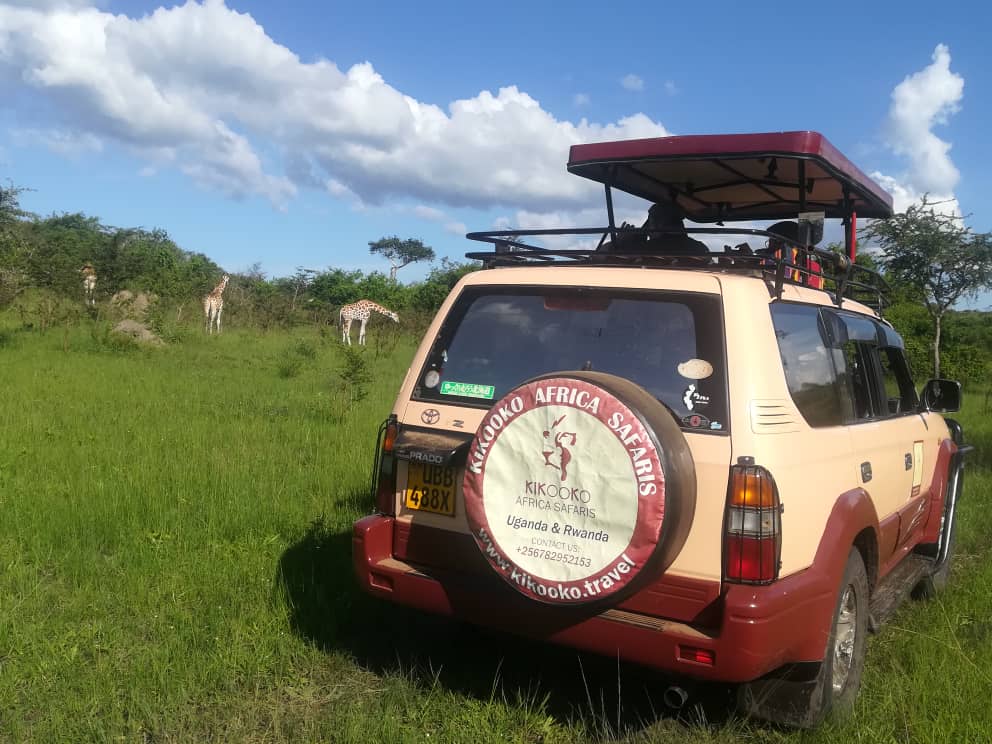
Africa Picture Safaris come in various forms, each offering a unique experience and catering to different preferences and budgets. Understanding the different types of safaris will help you choose the one that aligns with your goals and expectations.
- Private Safaris: Private safaris offer exclusivity, allowing you to have the undivided attention of guides and customize the itinerary according to your specific photography interests. This option is ideal for photographers who prioritize flexibility and personalized experiences.
- Group Safaris: Group safaris bring together like-minded photographers, providing an opportunity to learn from each other, share experiences, and foster a sense of camaraderie. Group safaris are often more cost-effective and can offer a diverse range of perspectives.
- Mobile Safaris: Mobile safaris involve traveling in a specially designed vehicle or camp, allowing for greater mobility and access to remote areas. These safaris are ideal for photographers seeking unique and off-the-beaten-path opportunities.
- Specialized Safaris: Some safari companies offer specialized photography-focused safaris, led by professional wildlife photographers or experts in specific fields such as bird photography or macro photography. These safaris provide tailored guidance and instruction to help photographers improve their skills and capture exceptional images.
Consider your photography goals, preferred level of comfort, and budget when choosing the type of safari that suits you best. Consulting with safari operators or fellow photographers can provide valuable insights and recommendations.
Essential photography gear and equipment to pack
Packing the right gear is crucial for a successful Africa Picture Safari. While the specific equipment may vary depending on personal preferences and photography style, there are some essential items that every wildlife photographer should consider bringing.
- Camera Body: Invest in a reliable and sturdy DSLR or mirrorless camera body capable of handling challenging shooting conditions and fast-moving subjects. Full-frame sensors are generally preferred for their superior low-light performance.
- Lenses: A versatile zoom lens with a focal range of around 70-200mm is a must-have for wildlife photography. Additionally, a telephoto lens with a focal length of 300mm or more will allow you to capture close-up shots of distant subjects. Consider prime lenses for their superior image quality and wider maximum apertures.
- Tripod: A sturdy and lightweight tripod is essential for achieving sharp and stable shots, especially in low-light situations and when using longer focal lengths. Look for options with quick-release mechanisms and adjustable legs for easy setup and efficient maneuverability.
- Extra Batteries and Memory Cards: Ensure you have sufficient backup batteries and memory cards to cover extended shooting sessions. Wildlife photography can be demanding on both battery life and storage space, so it’s best to be prepared.
- Camera Bag: Invest in a durable and comfortable camera bag that can accommodate all your gear and provide easy access to your equipment during safaris. Look for padded dividers, weather resistance, and ergonomic design for added convenience.
- Additional Accessories: Consider bringing a remote shutter release, lens filters (e.g., polarizing filters for reducing glare or neutral density filters for long exposures), lens cleaning kit, and a comfortable camera strap.
Always check the weight and size restrictions imposed by airlines and pack accordingly. Remember to leave room for personal essentials and consider the climate and specific requirements of your chosen safari destination.
Preparing for the African wilderness: health and safety considerations
Preparing for an Africa Picture Safari goes beyond packing the right gear. It is crucial to prioritize your health and safety to ensure a smooth and enjoyable experience in the African wilderness.
- Vaccinations and Medications: Consult with a travel health professional or your healthcare provider well in advance to determine the necessary vaccinations and medications for your chosen safari destination. Common vaccinations include those for yellow fever, tetanus, hepatitis A and B, and typhoid. Malaria prophylaxis may also be advised in certain regions.
- Travel Insurance: Accidents and unforeseen circumstances can occur during safaris, so it is essential to have comprehensive travel insurance that covers medical emergencies, trip cancellations, and lost or damaged equipment. Ensure that photography equipment is specifically covered by the policy.
- Safety Briefings: Pay close attention to safety briefings provided by your safari guides. These briefings will cover important guidelines for approaching wildlife, maintaining a safe distance, and general conduct during the safari. Following these instructions is crucial to ensure your safety and the welfare of the animals.
- Emergency Contacts: Keep a list of emergency contacts, including the contact information of your safari company, the nearest medical facilities, and your country’s embassy or consulate. Share these details with a trusted contact back home as well.
- Respecting the Environment: Remember to practice responsible tourism and respect the environment and wildlife. Follow guidelines for waste disposal, minimize disturbances to wildlife, and avoid littering. Leave only footprints and take only photographs.
By taking these necessary precautions, you can ensure a safe and enjoyable Africa Picture Safari experience. Remember to stay informed about the latest travel advisories and regulations for your chosen destination and maintain flexibility, as conditions and requirements may change.
Top Wildlife Photography Opportunities in Africa
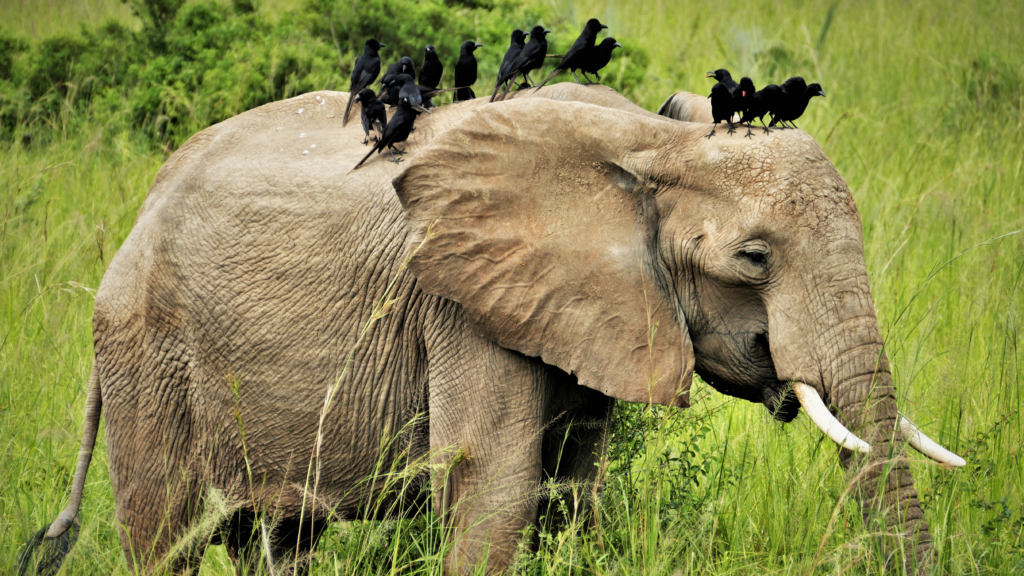
Africa is a continent teeming with remarkable wildlife, offering endless opportunities for wildlife photography enthusiasts. From the iconic Big Five to the awe-inspiring Great Migration, Africa’s diverse ecosystems provide a wealth of subjects to capture through the lens. In this section, we will explore some of the top wildlife photography opportunities in Africa, highlighting the unique characteristics and locations of these captivating subjects.
Exploring the famous Big Five: lions, elephants, rhinos, leopards, and buffalos
The Big Five, consisting of lions, elephants, rhinos, leopards, and buffalos, are undoubtedly the most sought-after subjects for wildlife photographers in Africa. These magnificent creatures have captured the imaginations of people around the world and symbolize the ultimate African safari experience.
Lions are often referred to as the “king of the jungle” and are renowned for their majestic presence and powerful roars. They can be found in various African countries, including Tanzania, Kenya, South Africa, and Botswana. Capturing intimate moments of lion prides or photographing their interactions during hunts offers thrilling opportunities for wildlife photographers.
Elephants, with their remarkable size and gentle demeanor, are a favorite subject for many photographers. The diverse landscapes of Africa, from the vast plains of Amboseli National Park in Kenya to the dense forests of Chobe National Park in Botswana, provide ample opportunities to capture these gentle giants in their natural habitat.
Rhinos, sadly threatened by poaching, offer a unique and challenging subject for wildlife photographers. The two species of rhinos, black and white, can be found in select locations across Africa, including South Africa, Namibia, and Kenya. Photographing these endangered creatures contributes to their conservation efforts and helps raise awareness about their plight.
Leopards are renowned for their elusive nature and striking beauty. Despite being the most secretive of the Big Five, leopards can be found in various African countries, with South Africa, Botswana, and Zambia offering excellent opportunities to photograph these elusive cats. Their grace, agility, and stunning coat patterns make them a prized subject for wildlife photographers.
Buffalos may not receive as much attention as their counterparts in the Big Five, but they are equally captivating to photograph. Known for their imposing size and formidable horns, buffalos can be found in large herds in several African countries, including Tanzania, Kenya, and South Africa. Capturing the dynamics within the herd or the raw power of a buffalo in motion can result in compelling wildlife images.
Capturing the Great Migration in the Serengeti and Masai Mara
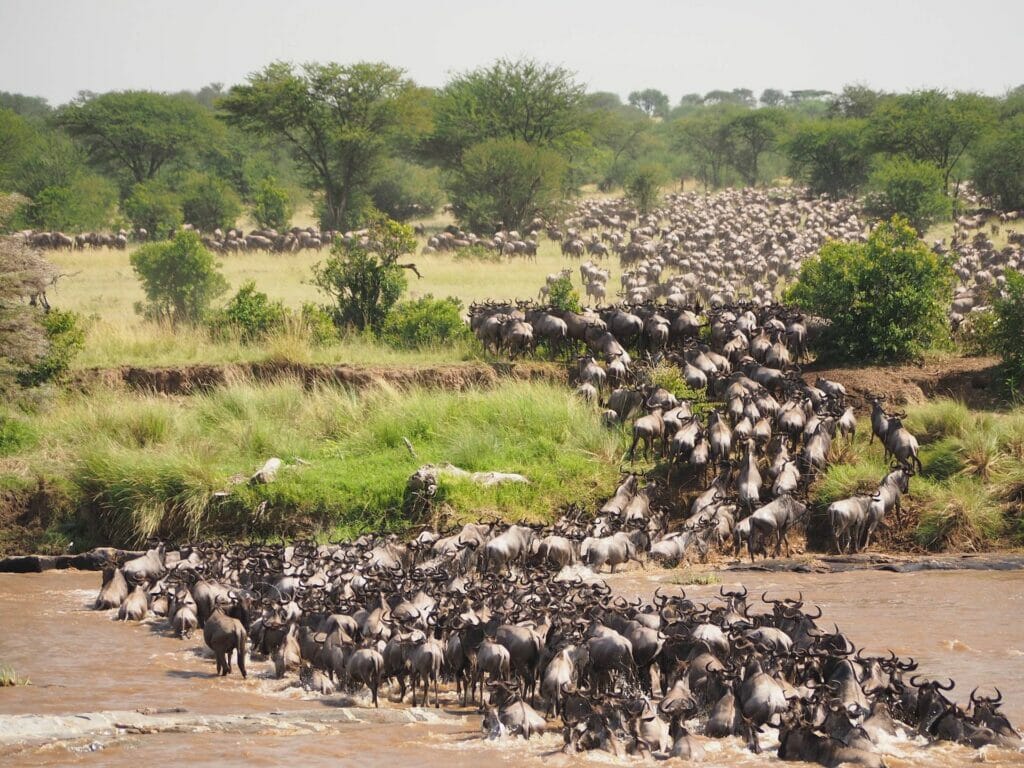
The Great Migration is one of the most iconic wildlife spectacles on the planet, attracting photographers from around the world. This annual event involves millions of wildebeest, zebras, and other herbivores as they journey across the Serengeti National Park in Tanzania and the Masai Mara Reserve in Kenya in search of fresh grazing grounds.
The Great Migration offers unparalleled opportunities for wildlife photographers to capture dramatic river crossings, predator-prey interactions, and the sheer magnitude of the herds. The crossings, especially across the Mara River, are particularly exhilarating, as crocodiles lie in wait, and predators such as lions and cheetahs seize the opportunity to hunt.
Timing is crucial when planning to photograph the Great Migration. The movement of the herds is influenced by the availability of grazing, rainfall patterns, and the cycle of life. Generally, the herds can be found in the Serengeti between November and June and in the Masai Mara between July and October. Consulting with experienced safari guides or tour operators will help you determine the best time and locations to capture this incredible natural phenomenon.
Photographing the unique wildlife of the Okavango Delta
The Okavango Delta in Botswana is a photographer’s paradise, offering a diverse range of wildlife and stunning landscapes. This unique ecosystem is a labyrinth of water channels, lagoons, and islands, creating a haven for a wide variety of animals and birds.
Photographers visiting the Okavango Delta can capture images of elephants wading through water, hippos basking in the sun, and crocodiles lurking in the marshes. The delta is also home to an array of bird species, including African fish eagles, herons, kingfishers, and the vibrant malachite kingfisher.
Exploring the delta by traditional mokoro (dugout canoe) or on guided walking safaris provides opportunities for more intimate wildlife encounters and allows photographers to capture the intricate details of the delta’s inhabitants. The combination of wildlife, waterways, and breathtaking sunsets makes the Okavango Delta an unforgettable destination for wildlife photography.
Seeking out the elusive mountain gorillas in Uganda and Rwanda
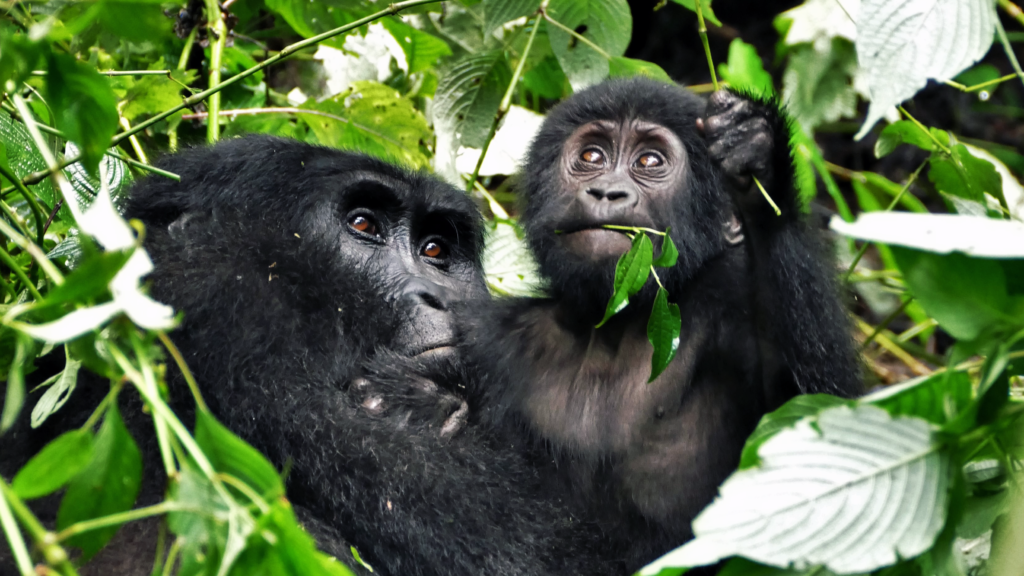
For wildlife photographers seeking a truly unique and humbling experience, encountering mountain gorillas in their natural habitat is an unrivaled opportunity. Uganda and Rwanda are the two primary destinations for gorilla trekking, offering photographers the chance to capture intimate moments of these magnificent creatures.
Mountain gorillas are critically endangered, with only a few hundred individuals remaining in the wild. Trekking through lush forests and steep terrain, guided by experienced trackers, provides an extraordinary opportunity to observe and photograph these gentle giants as they go about their daily lives.
Gorilla trekking permits are essential and must be obtained in advance due to limited availability. These permits not only contribute to the conservation efforts but also ensure a regulated and sustainable approach to gorilla tourism. It is important to follow the guidelines provided by park authorities to minimize disturbances and ensure the well-being of the gorillas.
Discovering the diverse bird species of Africa
Africa is a haven for bird enthusiasts, with over 2,000 species of birds found across the continent. From vibrant kingfishers to majestic raptors, Africa’s birdlife offers endless opportunities for stunning wildlife photography.
The various habitats found in Africa, including wetlands, savannahs, rainforests, and deserts, support a rich diversity of bird species. The Okavango Delta in Botswana, the Maasai Mara in Kenya, and the Kruger National Park in South Africa are just a few destinations known for their abundant birdlife. Uganda also has over 1,000 species of birds!
Photographing birds requires patience, a keen eye, and an understanding of their behavior. Utilizing long telephoto lenses, capturing birds in flight, and focusing on their intricate plumage can result in captivating and visually striking images.
Other popular wildlife photography subjects in Africa
Beyond the Big Five and the Great Migration, Africa offers an array of other wildlife photography subjects that are equally captivating. From the playful antics of meerkats in the Kalahari Desert to the stealthy movements of cheetahs on the open plains, there is always something exciting to capture through the lens.
Africa’s diverse landscapes are also home to a variety of antelope species, such as impalas, kudus, and gazelles, which present opportunities for capturing their grace and agility. Predators such as cheetahs, hyenas, and wild dogs offer thrilling subjects, showcasing their unique hunting techniques and social behaviors.
Furthermore, Africa’s reptiles, including Nile crocodiles, chameleons, and various snake species, provide interesting and often overlooked subjects for wildlife photographers.
Exploring the lesser-known species and seeking out unique encounters with Africa’s wildlife will yield a diverse and captivating portfolio of images. Remember to always prioritize the well-being and conservation of the animals, respecting their habitats and keeping a safe distance to minimize disturbances.
Techniques and Tips for Successful Wildlife Photography
Capturing stunning wildlife photographs in Africa requires more than just a good camera and luck. It demands a combination of technical skills, artistic vision, and an understanding of animal behavior. In this section, we will delve into various techniques and share valuable tips to help you elevate your wildlife photography game during your Africa Picture Safari.
Understanding the basics of wildlife photography: composition, exposure, and focus
To create impactful wildlife photographs, it is crucial to master the fundamentals of photography. Three key elements to focus on are composition, exposure, and focus.
Composition plays a vital role in creating visually pleasing and engaging images. Consider the rule of thirds, where you divide the frame into a grid of nine equal sections and place your subject along the lines or at their intersections. This technique adds balance and interest to your photos. Additionally, experiment with different angles, perspectives, and framing to create unique compositions that tell a story.
Exposure is the amount of light that enters your camera sensor. Understanding exposure settings such as aperture, shutter speed, and ISO is essential for capturing well-exposed images. In wildlife photography, lighting conditions can be challenging, with harsh sunlight, backlighting, or low-light situations. Learn to adjust your camera settings accordingly, balancing the need for a fast shutter speed to freeze motion while maintaining proper exposure.
Focus is critical when photographing wildlife, as it ensures the subject is sharp and in focus. Depending on your camera and lens, you can choose between single-point autofocus or continuous autofocus modes. For fast-moving subjects, such as birds in flight or running animals, continuous autofocus is recommended to keep the subject sharp.
Experimenting with different compositions, exposure settings, and focusing techniques will allow you to develop your own style and capture compelling wildlife images.
Mastering the art of capturing wildlife behavior and action shots
Capturing the behavior and action of wild animals adds depth and storytelling to your images. Patience, observation, and anticipation are key to successfully capturing those decisive moments.
Patience is crucial in wildlife photography. Animals may exhibit interesting behaviors, such as hunting, grooming, or interacting with their young, but capturing these moments requires time and patience. Allow yourself to become part of the environment, anticipating and waiting for the right moment to press the shutter.
Observation is an essential skill for wildlife photographers. Carefully watch the animals’ behavior, body language, and interactions with their surroundings. This will help you anticipate their next move and be ready to capture it.
Anticipation is a skill that comes with experience. By understanding animal behavior and having knowledge of their habits, you can predict certain actions or movements. This enables you to position yourself in the best possible spot to capture the desired shot.
When photographing wildlife in action, use a fast shutter speed to freeze the motion and capture the details. Experiment with different camera settings and burst mode to increase your chances of capturing the perfect moment.
Using natural light and understanding the importance of timing
Lighting is a crucial element in wildlife photography, as it can dramatically enhance or diminish the impact of your images. Natural light offers a wide range of possibilities, depending on the time of day and weather conditions.
Golden hour, the period shortly after sunrise or before sunset, is often referred to as the best time for photography. The warm, soft light during these hours creates a magical atmosphere, adding a beautiful glow to your images. The low angle of the sun also creates long shadows, which can add depth and dimension to your photographs.
Backlighting occurs when the main source of light is behind your subject. This technique can create a stunning silhouette effect or add a halo of light around the subject, enhancing its shape and details. Experiment with different angles and settings to achieve the desired effect.
Overcast days offer diffused lighting, which can be ideal for capturing wildlife portraits or close-up shots. The soft, even lighting eliminates harsh shadows and reduces the risk of overexposure. Take advantage of these conditions to capture intimate details and textures.
Timing is crucial when photographing wildlife. Animals are often most active during the early morning and late afternoon when temperatures are cooler. Plan your photography sessions accordingly, maximizing your chances of encountering wildlife in their most active and engaging moments.
Tips for photographing animals in challenging environments (e.g., low light, dense vegetation)
Photographing wildlife in challenging environments requires adaptability and technical proficiency. Here are some tips to help you overcome common obstacles:
Low-light conditions can be challenging, especially during early morning or late afternoon when animals are most active. To capture sharp images in low light, increase your ISO setting to allow for faster shutter speeds. Be mindful of noise levels as you push the ISO, and consider using noise reduction techniques during post-processing.
Dense vegetation can obstruct your view and make it difficult to focus on your subject. To overcome this, use a wide aperture (low f-number) to create a shallow depth of field, separating your subject from the background. This will help isolate the animal and draw attention to its features.
Fast-moving subjects require a combination of quick reflexes and appropriate camera settings. Use continuous autofocus mode to track the subject’s movement, and select a fast shutter speed to freeze the action. Burst mode can also be beneficial, allowing you to capture a series of shots in rapid succession.
Silent shooting mode can be advantageous when photographing skittish or easily disturbed animals. This feature reduces the sound emitted by your camera, minimizing the risk of startling the subject and ensuring more natural behavior.
Adaptability and a solid understanding of your camera’s capabilities are essential in challenging environments. Experiment with different techniques and settings, and don’t be afraid to push the boundaries of your equipment to achieve the desired results.
Ethical considerations in wildlife photography: respecting the animals and their habitat
As wildlife photographers, it is our responsibility to prioritize the well-being of the animals and respect their natural habitat. By following ethical guidelines, we can minimize our impact and contribute to the conservation of these incredible creatures.
Maintain a safe distance from the animals to avoid causing stress or altering their behavior. Respect any guidelines or regulations set by park authorities or local guides regarding proximity to wildlife.
Do not bait or lure animals for the purpose of photography. This disrupts the natural balance and can have adverse effects on their behavior and well-being.
Avoid disturbing nesting or breeding sites. Breeding and nesting seasons are critical periods for wildlife, and any disruptions can have long-lasting effects on their populations.
Do not leave any traces or litter behind. Dispose of waste properly and leave the environment as you found it. This helps preserve the natural beauty of the area and prevents harm to wildlife.
Educate yourself and others about the importance of conservation and responsible wildlife photography. Share your knowledge and experiences, raising awareness about the need to protect these incredible animals and their habitats.
By following these ethical considerations, you can ensure that your wildlife photography contributes positively to the conservation of Africa’s remarkable wildlife and helps preserve the natural wonders for future generations.
Enhancing Your Africa Picture Safari Experience
An Africa Picture Safari is not only about capturing incredible wildlife photographs but also about immersing yourself in the rich cultures, landscapes, and experiences that Africa has to offer. In this section, we will explore ways to enhance your Africa Picture Safari experience, allowing you to create a truly memorable and fulfilling journey.
Engaging with local communities and capturing cultural experiences
Africa is a continent rich in diverse cultures and traditions, offering a wealth of opportunities to engage with local communities and capture unique cultural experiences. Interacting with local people not only adds depth to your safari but also provides a glimpse into their way of life and their relationship with the natural world.
Consider visiting local villages or communities, where you can learn about their customs, traditions, and daily activities. Engage in conversations, listen to their stories, and seek permission before taking photographs. This respectful approach fosters a connection and allows for more authentic and meaningful encounters.
Participating in cultural ceremonies or events can also provide rich photography opportunities. Whether it’s witnessing traditional dances, attending festivals, or documenting traditional crafts, capturing the vibrancy and diversity of African cultures adds a unique dimension to your portfolio.
Remember to always be respectful and sensitive to the cultural norms and practices of the communities you visit. Seek permission before taking photographs of individuals, and be aware of any restrictions or guidelines provided by your guides or hosts.
Incorporating landscape and scenic photography into your safari
While wildlife photography often takes center stage during an Africa Picture Safari, it’s important not to overlook the breathtaking landscapes and scenic beauty of the continent. Africa offers a diverse range of landscapes, from expansive savannahs and towering mountains to lush rainforests and pristine beaches.
Take the time to explore and photograph the stunning natural wonders that surround you. Capture the vastness of the African savannah at sunrise or sunset, with the golden light casting a warm glow across the land. Frame majestic mountains against the backdrop of a colorful sky, or venture into the heart of a rainforest to photograph its lush vegetation and cascading waterfalls.
Consider incorporating elements of the landscape into your wildlife photographs to provide context and a sense of place. Including a sweeping vista or dramatic horizon can add depth and visual interest to your images.
Pay attention to the ever-changing light and weather conditions, as they can transform a scene from ordinary to extraordinary. Experiment with different compositions, angles, and perspectives to capture the essence of the landscapes and create compelling images that tell a story.
Making the most of photography workshops and guided tours
Photography workshops and guided tours can greatly enhance your Africa Picture Safari experience, providing valuable insights, instruction, and opportunities to learn from seasoned professionals. These specialized tours offer a structured approach to improving your photography skills while exploring the best locations for capturing stunning images.
Photography workshops often include classroom sessions, practical exercises, and critique sessions, allowing you to refine your techniques and receive personalized feedback from experienced instructors. These sessions cover a wide range of topics, including composition, lighting, post-processing, and storytelling through photography.
Guided tours led by professional wildlife photographers or expert guides offer the advantage of local knowledge and insights into the best locations and wildlife hotspots. These guides can share their expertise on animal behavior, help position you in optimal spots for photography, and provide valuable tips for capturing exceptional images.
When selecting a photography workshop or guided tour, consider the reputation and credentials of the instructors or guides. Look for testimonials or reviews from previous participants to ensure that the workshop or tour aligns with your goals and expectations.
Post-processing and editing techniques for wildlife photography
Post-processing is an integral part of modern wildlife photography, allowing photographers to refine and enhance their images to achieve their desired vision. While capturing a compelling photograph in-camera is crucial, post-processing can elevate your images to the next level.
Software such as Adobe Lightroom and Photoshop offer a wide range of tools and adjustments to fine-tune your photographs. Here are some post-processing techniques commonly used in wildlife photography:
Crop and Composition: Use cropping tools to reframe your image and adjust the composition. This can help eliminate distractions, emphasize the subject, or create a more pleasing visual balance.
Exposure and White Balance: Adjust exposure levels to optimize brightness and contrast. Fine-tune white balance to ensure accurate color representation and remove any unwanted color casts.
Selective Adjustments: Utilize adjustment brushes or filters to selectively enhance or correct specific areas of your image. This allows you to bring out details, adjust exposure, or enhance colors in specific parts of the photograph.
Sharpening and Noise Reduction: Apply appropriate sharpening techniques to enhance details and make your subject stand out. Reduce noise levels, particularly in low-light or high-ISO images, while preserving important details.
Creative Edits: Experiment with creative editing techniques to add artistic flair to your images. This can include adjustments to saturation, contrast, or applying special effects to create a unique visual style.
Remember that post-processing should be used to enhance the natural beauty of your images, not to dramatically alter or misrepresent the scene. Develop your own editing style over time, finding a balance that reflects your artistic vision while maintaining the integrity of the wildlife and its surroundings.
Showcasing and sharing your Africa Picture Safari: creating a memorable portfolio
After your Africa Picture Safari, it’s time to showcase and share your photographs, allowing others to experience the beauty, diversity, and wonder of Africa’s wildlife. Creating a memorable portfolio can help you tell a compelling visual story and preserve your memories for years to come.
Select your best images from the safari, focusing on those that evoke emotion, capture unique moments, or display technical excellence. Aim for a diverse range of subjects, including wildlife portraits, action shots, landscapes, and cultural experiences. Variety in subject matter and composition makes for a more engaging and dynamic portfolio.
Consider creating an online portfolio or a photography blog to share your images with a wider audience. Utilize social media platforms to connect with fellow photographers, wildlife enthusiasts, and potential clients. Engage in online photography communities and participate in photography competitions to gain exposure and receive feedback on your work.
When sharing your photographs, accompany them with stories, insights, and details about the subjects, locations, or the experiences encountered. This adds depth and context to your images, allowing viewers to connect with the wildlife and the stories behind the photographs.
Remember that your Africa Picture Safari is a personal journey, and your portfolio is a reflection of your unique perspective and experiences. Embrace the opportunity to share the beauty of Africa’s wildlife and inspire others to appreciate and protect these incredible creatures and their habitats.
Book Your Africa Picture Safaris With Kikooko Africa Safaris
An Africa Picture Safari offers a truly immersive and unforgettable experience for wildlife photography enthusiasts. The continent’s stunning landscapes, diverse wildlife, and vibrant cultures provide endless opportunities to capture breathtaking images and create lasting memories. By planning meticulously, honing your photography skills, respecting the environment and wildlife, and embracing the unique experiences Africa has to offer, you can elevate your photography game and create a truly remarkable portfolio.
If you’re looking to book a safari in Uganda, Rwanda, or Tanzania, it would be our pleasure to help you learn a little bit more about our region. Reach out to our team today and we will be happy to provide you with an obligation-free consultation!

